Tourist Places in AjmerIn the northern region of India, in the state of Rajasthan, lies the city of Ajmer. This city, which is also known by the spellings Ajmere or Ajmir, is placed on the lower portions of Taragarh Hill, which has a citadel erected above it. Ajayadeva was a Rajput king who founded Ajmer in the eleventh century. In 1193, it was included in the Slave dynasty of the Delhi sultanate. It was given back to its Rajput kings when homage was paid, but Akbar, the Mughal monarch, took it in 1556. Then the Marathas reclaimed control of it in 1770. The region remained a constant Rajput-Maratha conflict after that until it was given over to the British in 1818. In 1956, Ajmer finally joined Rajasthan in the aftermath of Indian independence. Today Ajmer is an oasis and a well-liked pilgrimage destination; Muslims worship Khwaja Moinuddin Chisti's grave at the Dargah Sharif. These locations, like Buland Darwaza and Akbar's Palace & Museum to see in Ajmer, goes on to say to leave you enthralled and craving more due to their spectacular beauty and historic significance. This oasis in Rajasthan draws travelers from all around the world all year long because of its fascinating Royal Mughal history and religious temples. Ajmer is a place where everyone may find comfort and a place to call home, whether they are history lovers or nature enthusiasts. All of the popular attractions in Ajmer offer visitors an exciting trip, whether this is the mythical allure of the Akbari Fort or the antiquated Adhai Din Ka Jhopra, or the serenity discovered at the Ana Sagar Lake and Durga Bag. The well-known locations in Ajmer are also intended for those who are spiritual. These places of worship welcome visitors of all religions and disciplines, whether they are visiting the magnificent Sai Baba Temple complex made of marble, the famed Dargah Sharif, or even the opulent Ajmer Jain Temple. Some of the top tourist places in Ajmer are listed below: 1. Ajmer Sharif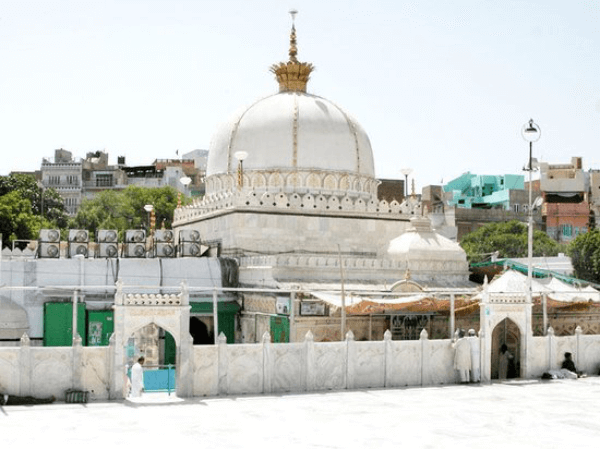
One of the most sacred sites of devotion in India for Muslims is the Ajmer Sharif Dargah, generally referred to as Ajmer Dargah, which is the mausoleum of Moinuddin Chishti and is visited by people of all faiths. Being the ultimate resting place of Khwaja Moin-ud-din Chisti, it has greatly aided in promoting Islamic moral and spiritual ideals among the general populace. Moin-ud-din Khwaja, Eminent Sufi Saint Chisti, spent his entire life working to improve the lives of the underprivileged. Due to the fact that people of all faiths hold this shrine in high regard, millions of devotees visit it year after year. Humayun, the Mughal Emperor, constructed Ajmer Sharif, which justifies the elaborate Mughal architecture. The Dargah is made up of different parts, including graves, courtyards, and Daalaans. The gateway with the silver doors, which was constructed in several stages, defines the site's entry. The pots are thought to have been presented by Emperor Akbar after the saint granted him an heir to the throne. Nizam Gate, Buland Darwaza, Jama Masjid, Aulia Masjid, Dargah Shrine, Mehfilkhana, and roughly a score more notable buildings are the most significant of these constructions. In the shrine's interior courtyard, there are two enormous cauldrons that can be seen. These pots, which can hold 2240 kg and 4480 kg, respectively, are used on special occasions to prepare sweet dishes like kheer. 2. Akbar's Palace and Museum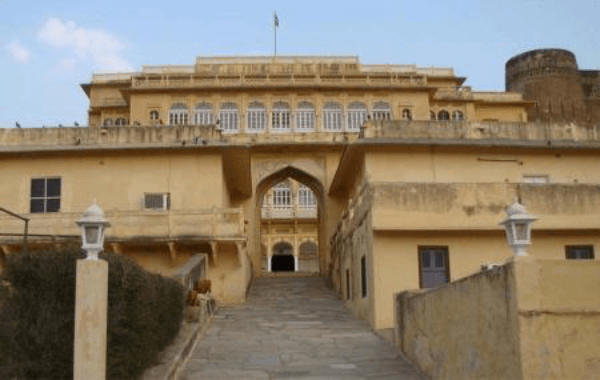
This majestic palace, which was built in the year 1500, is a haven for history buffs. One of the top attractions in Ajmer, the palace is home to a government museum that exhibits various facets of Mughal and Rajput society. While visiting the Ajmer Sharif Dargah, Akbar and his troops resided in Akbar's palace, which was built in 1570AD. It is well recognized for its museum, which showcases ancient military relics as well as fine sculptures, paintings, and other Mughal-era artifacts. The museum covers numerous facets of Rajput and Mughal lifestyles and warfare. The enormous figure of Goddess Kali made of black marble that is housed in the palace is well known. In 1949, the Archaeological Museum was founded. The museum, which is split into three parts, is situated in Ajmer's Dil-e-Aaram Gardens. The museum has two "Yupa Pillars" (sacrificial posts), which are collections of sculptures and some artifacts from former civilizations that have been discovered. It also includes a collection of priceless artifacts, medieval armor, stone sculptures, and fine paintings of the Maharajas of Bharatpur. 3. Ana Sagar Lake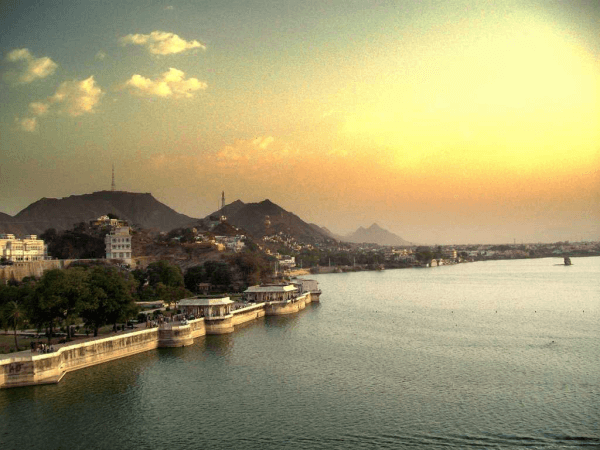
The spectacular artificial lake known as Ana Sagar Lake is situated in the Indian state of Rajasthan's city of Ajmer. The famous artificial lake Ana Sagar was built between 1135 and 1150 AD by Maharaja Arnoraj Chauhan, also called Anaji, son of Ajaypal Chauhan was the ancestor of Maharaja Prithviraj Chauhan. Later, the Mughal emperors developed the lake further, making it one of the top tourist destinations in Ajmer. The greatest time to visit this lake is at sunset when the sight is the most spectacular. The adjacent temple offers a distinctive, beautiful view of the lake. One shouldn't forget to bring their camera to record those wonderful and magnificent vistas. The lake could, however, dry up in the summer. Daulat Bagh Gardens, started by Emperor Jahangir, is a magnificent garden full of wide-open spaces and rich foliage, and the Khobra Behroon temple is located around Ana Sagar Lake. Visitors often choose to visit these two prominent Ajmer attractions together with a day trip to the lovely lake. The distance between the lake and Ajmer's main city is about 13 kilometers. In the middle of the lake, there lies an island. Here, visitors adore taking pleasure in boating and water scooter trips. The lake covers a surface area of 12 kilometers and is around 4.4 meters deep. 4. Adhai Din ka Jhopra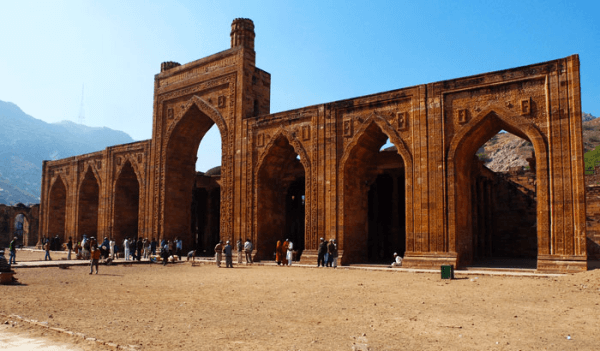
One of the most well-known sights to see in Ajmer is the spectacular remains of the Adhai-din-ka-Jhopra mosque, which is located on the town's periphery beyond the Dargah of Khwaja Muin-up-din Chishti. Its construction supposedly took place in 1153 in just two and a half days. Others suggest that it was nicknamed after a 2.5-day celebration. Originally constructed as a Sanskrit college, Mohammed Ghori took control of Ajmer in 1198. He changed the structure into a mosque by constructing a seven-arched wall flanked by an Islamic calligraphic panel. The edifice, an exceptional exemplar of Indo-Islamic architecture, was subsequently embellished by Sultan Iltutmish in 1213 AD. Although in need of repair, it is a magnificent architectural work with towering domes, pillars, and a lovely arching screen that was primarily constructed from fragments of Jain and Hindu temples. 5. Soniji Ki Nasiyan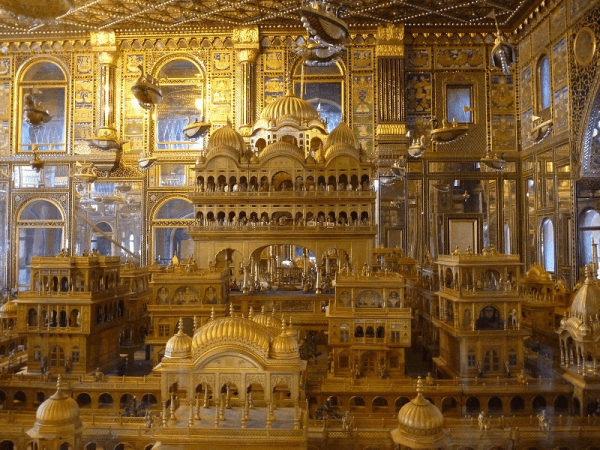
The 1865-built Soniji ki Nasiyan temple, popularly known as the Ajmer Jain Temple, is situated on Prithvi Raj Marg in Ajmer. One of the top tourist attractions in Ajmer is the two-story Lal Mandir (Red Temple), which is dedicated to Lord Adinath, the first Jain "Tirthankara," and is a superb demonstration of elaborate craftsmanship. This temple, built in the late 19th century, is one of India's wealthiest temples. In his book "Jainism: A Pictorial Guide to the Religion of Non-Violence," Kurt Titze makes reference to this renowned architectural masterpiece. The temple is also known as the Red Temple since it is constructed of red sandstone. It has a red stone entrance and a marble stairway which is inlaid with carvings of the saintly Tirthankars, omniscient Jain masters who propagated morality. The Lord Adinath idol is kept in the worship zone of one section of the temple, while another section serves as a museum and has a hall. The museum's exhibit, which is made of gold, depicts Lord Adinath's 5 life stages. The hall's 3,200 square feet area is embellished with stained glasswork and Belgium-stained glass. Swarna Nagari, the main hall, is appropriately titled the "City of Gold" since it has multiple wooden figurines that have been gold-plated. It contains a 1000 kg gold-plated wooden carving representing the city of Ayodhya. The complexity is astounding. Only Jains are permitted to perform their traditions within the main temple, also known as the Lal Mandir or Red Temple. 6. Mayo College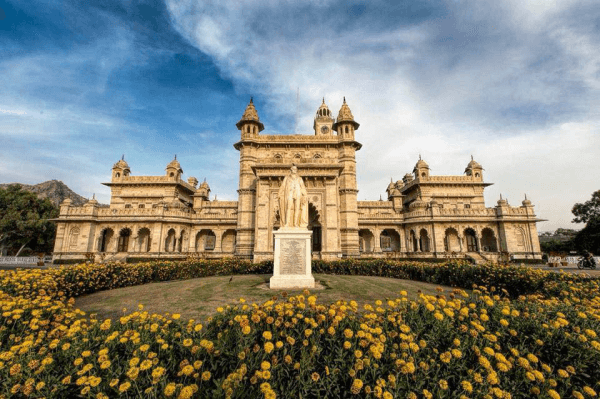
The Earl of Mayo established Mayo College, a prestigious boys-only boarding school in Ajmer, in the late 19th century. The college edifice, which is surrounded by sculptures and beautiful grounds, is renowned for its Indo-Saracenic design. The College's grounds include a museum. One of the best and first autonomous boarding schools in India is Mayo College. Mayo College was established in 1875 and named in honor of Richard Bourke, the 6th Earl of Mayo, in order to offer the princely states of India the kind of education similar in lines to that offered by Eton College in the United Kingdom. The curriculum was devised for boys from wealthy households of princes and nobles. The layout of the Coat of Arms, which features a Rajput and a Bhil warrior, was provided by John Lockwood Kipling, the principal of Mayo College and the father of Nobel Prize winner Rudyard Kipling. Mayo College Museum, which is located at Jhalwar House and was conceived by Mr. T. N. Vyas, is regarded as the biggest school museum in the entire globe. The components of the repository, which are scattered across 18 campus rooms, were all contributed by former students, instructors, parents, or well-wishers. The collection contained vintage artwork, sculptures, images, and coins. Additionally, there are stuffed birds and butterflies in the natural history department. 7. Ajmer Clock Tower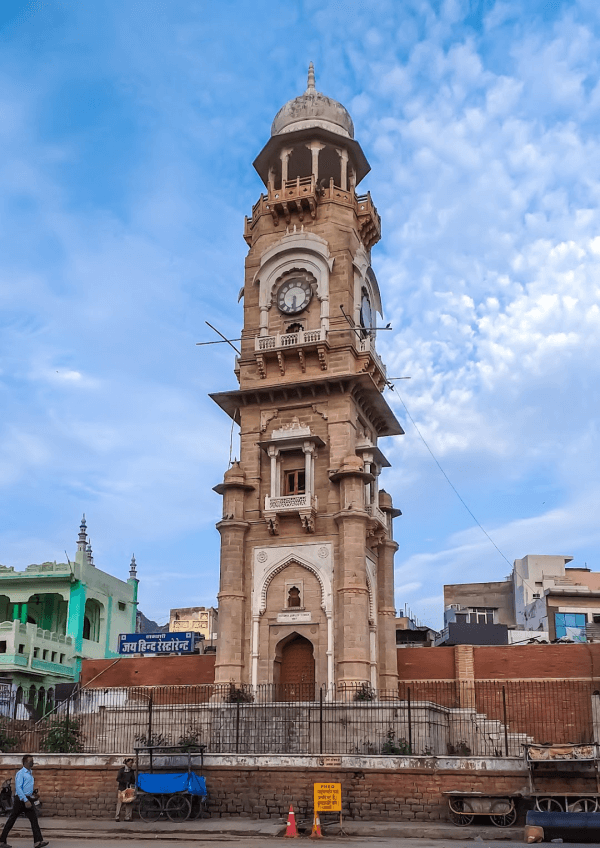
The British had a significant historical impact on the city of Ajmer. In Ajmer, the British left their mark in a variety of ways, such as on the educational institutions and architectural elements in the city. A few of these structures exist in the center of Ajmer, but the Ajmer Clock Tower, also known as the Victoria Jubilee Clock Tower, is the one that draws visitors' attention right away. The monument, an impressive clock tower that was constructed in 1887, is situated directly opposite the railway station in Ajmer. The Clock Tower, which was initially constructed in the 19th century to celebrate Queen Victoria's Golden Jubilee, today stands as a representative of the city of Ajmer. It demonstrates the excellent use of Indo-Islamic architectural elements in it. The Tower's four sides, each of which has a balcony that looks out onto the immediate metropolis and is crowned by a distinctive Islamic dome. It is renowned for its exquisite architecture and is a spectacular example of British design, reminding viewers of a scaled-down counterpart of the famous Big Ben. 8. Prithviraj Smarak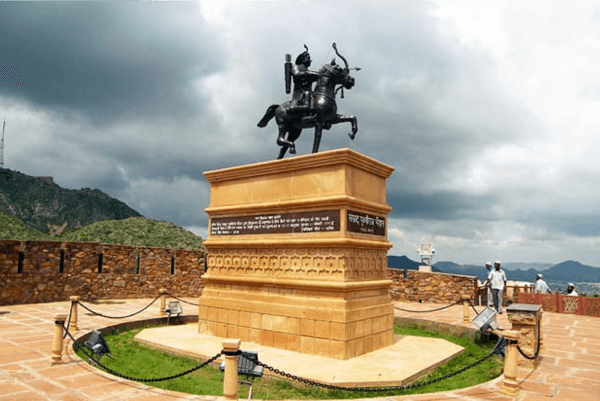
Prithviraj Chauhan, the outstanding hero of the Rajput Chauhan dynasty, is commemorated at the Prithviraj Smarak. He was the last sovereign of the Chauhan bloodline and was entrusted with governing the twin capitals of Ajmer and Delhi in the 12th century. He was revered as the ideal of commitment and bravery. The memorial, which is in Ajmer on the Taragarh Road, features a sculpture of the king on a horse made of black stone. While Prithviraj Chauhan is depicted with a bow and arrow in his hand, the horse's front hoof is raised as if it were about to charge ahead. The smarak is positioned on an elevated rectangular platform that has details about him displayed on it. Visitors can get a bird's-eye view of the city of Ajmer from the memorial, which is perched on top of a hill and encircled by the Aravalli range. In the area just next to the memorial, visitors can sit and unwind. 9. Ajmer Government Museum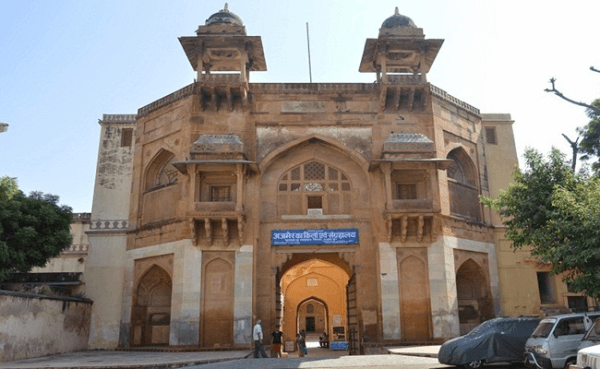
One of Ajmer's most popular historical sites is the Ajmer Government Museum, which is housed inside the historic Akbari Fort. The museum, which was formed in 1908, houses an incredible collection of artifacts from Mughal Emperor Akbar's era. The Government Museum of Ajmer, located on the grounds of the historic Akbari Fort from the sixteenth century, is home to a sizable collection of historical artifacts, displays, sculptures, miniature paintings, and other items. The museum, also called the Bharatpur Museum, houses a substantial collection of artifacts from antiquity. It includes the best paintings of the former Maharajas of Bharatpur, together with stone sculptures, inscriptions, and armor. There are various divisions inside the museum, such as divisions for arts and crafts, industry, archaeology, and armory. Additionally, there is a special gallery for kids. The Government Museum's collection is made up of notable Mughal paintings, historical statues of numerous Indian deities, daggers, and swords. Here, one may come across a number of sculptures of Kali, Surya, Trimurti, Lakshmi Narayan, Hariharan, Kuber, Revanta, Mahishashur Mardini, Saptamatrikas, and Vishnu. But what makes the Museum one of the most well-known tourist attractions in Ajmer is its collection of epigraphs. A few of the prime examples are the Rahomi epigraph from the second century BCE and the Pushkar Inscription from the tenth century. 10. Taragarh Fort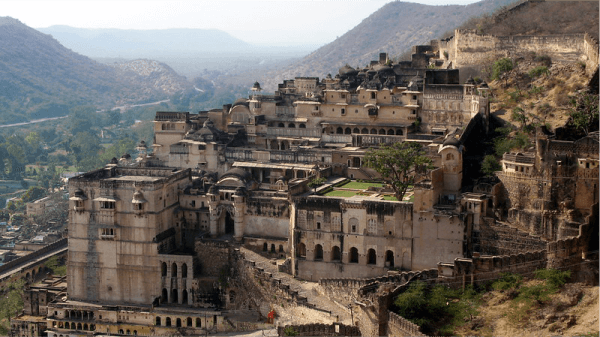
The Taragarh Fort, one of Bundi's most spectacular fortifications, was built in the year 1354 under the reign of the Chauhan empire. This magnificent hillfort, one of the most popular destinations in Ajmer, is renowned for its exquisite construction, with its three enormous entrances serving as its most notable features. The fort commonly referred to as the "Star Fort," is perched on a steep hill and provides a spectacular view of the entire city of Bundi, which is located in the Nagpahari of the Aravalli hills. Renowned writer Rudyard Kipling stated that the fort was "more the work of Goblins than of men". Unfortunately, the passage of time has wreaked havoc on this beautiful building, and the fort's most impressive and unique architectural features are now mostly in ruins. Three gateways define the fort's entry, which is thereafter followed by tunnels, several battlements, and ramparts. Lakshmi Pol, Phuta Darwaza, and Gagudi ki Phatak are the names of Taragarh Fort's three entrances. The fort's entrances show an incredible usage of Mughal architectural styles, despite being in shambles currently. The entrances' intriguing inscriptions and vintage locks are a visual pleasure. The iconic Grand Canyon and the "Garbha Gunjan" are two displays that tourists find to be of significant interest. The Rani Mahal, which is also nearby and was constructed specifically for the wives and mistresses of the ruling class at the time, is another well-known and popular tourist destination. When the sun sets, and the entire city is bathed in the fading light of the setting sun, the site is at its most stunning impression.
Next TopicTourist Places in Dalhousie
|
 For Videos Join Our Youtube Channel: Join Now
For Videos Join Our Youtube Channel: Join Now
Feedback
- Send your Feedback to [email protected]
Help Others, Please Share










